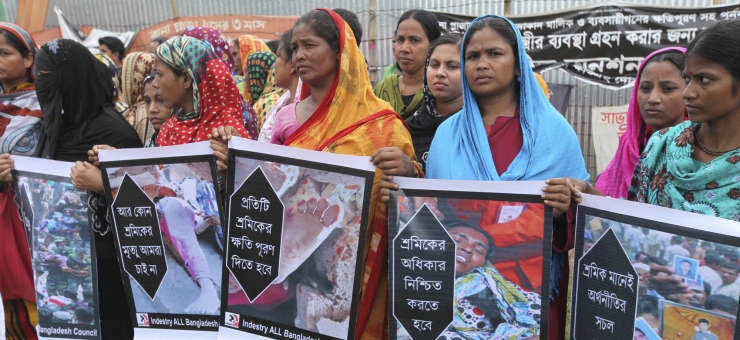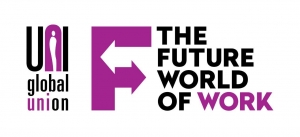ILO: Better working conditions key to Bangladesh growth

Improving working conditions is critical to bringing sustainable long-term growth to Bangladesh – this is the key finding of a major new report by the ILO examining the country’s garment industry.
The report, Bangladesh: Seeking better employment conditions for better socioeconomic outcomes, says unregulated growth in the garment industry has resulted in poor conditions in the majority of workplaces and has led to some of the worst industrial disasters in history.
Bangladesh has been described as the “finish line” in the global race to the bottom in terms of cheap labour and working conditions. In April 2013, 1,129 workers died when the Rana Plaza factory complex collapsed in the capital Dhaka. The tragedy led global unions UNI and IndustriALL to establish the Accord on Fire and Building Safety in Bangladesh, a legally binding agreement between global unions and brands, which aims to bring long-term safety and sustainability to the garment sector. Over 100 international brands have now signed the agreement.
UNI General Secretary Philip Jennings said, “Through the Accord, UNI and IndustriALL are working tirelessly with over 100 brands to improve safety and working conditions in Bangladesh. The Accord will mean safety at work for millions of workers in over 1,500 factories.
“But to guarantee long-term and lasting improvements for all workers, we know that the answer lies in stronger unions, a living wage, and a voice on the job. These are our ultimate aims.”
According to the report, Bangladesh has experienced relatively high economic growth throughout the past two decades mainly thanks to its booming garment trade, which accounted for 4.8 per cent of global apparel exports in 2011. However, garment sector workers earn some of the lowest wages in the region. As of August 2013, the report says, the monthly minimum wage for entry-level workers in the garment sector was US39 per month – about half of the lowest rate in other major garment exporting countries such as Cambodia, India, Sri Lanka and Vietnam.
Although poverty has declined, 76 per cent of the population live on less than US$2 per day – the highest percentage in the region. Furthermore, Bangladesh’s social protection coverage is among the lowest in the region. In 2010, less than ten per cent of all urban poor had access to social assistance.
The report warns that unless a comprehensive set of labour market and social policies are introduced, Bangladesh will be unable to maintain its economic momentum and improve living standards in a sustainable way. And while the RMG sector is central to the economy, new measures need to be far-reaching.

